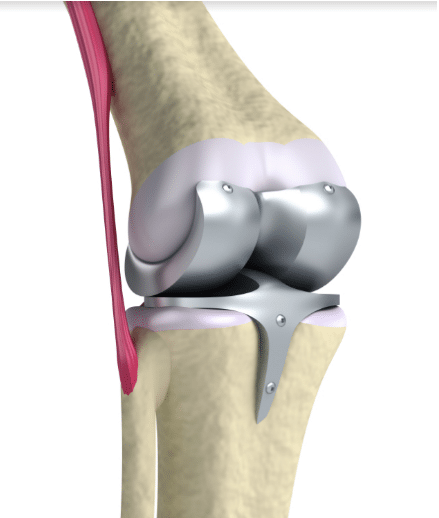Recovery after knee replacement surgery, also known as knee arthroplasty, varies from person to person depending on factors such as age, overall health, and the extent of joint damage prior to surgery. However, a general timeline and rehabilitation process can be outlined to provide a comprehensive understanding of what patients typically experience post-surgery.
Recovery Period:
- Hospital Stay: Most patients stay in the hospital for 1 to 3 days following knee replacement surgery. During this time, they are monitored for pain management, wound healing, and initial mobility exercises.
- Immediate Post-operative Phase (0–2 weeks):
- Pain Management: Pain and swelling are common immediately after surgery. Medications are prescribed to manage pain and reduce inflammation.
- Physical Therapy: Physical therapists begin gentle exercises to improve circulation, regain knee movement, and strengthen the surrounding muscles. Patients typically start with simple range of motion exercises and progress to walking with the help of a walker or crutches.
3. Early Recovery Phase (2–6 weeks):
- Continued Physical Therapy: Therapy sessions become more intense, focusing on improving knee flexibility, strength, and balance. Patients work on walking without assistance and climbing stairs.
- Home Exercise Program: Patients are encouraged to continue exercises at home to reinforce gains made during physical therapy sessions.
- Monitoring for Complications: During follow-up visits, the surgical team monitors for signs of infection, blood clots, or other complications.
4. Mid-term Recovery Phase (6 weeks — 3 months):
- Increased Activity Levels: Patients gradually resume more normal activities, although they may still need to avoid high-impact activities.
- Physical Therapy Progression: Therapy sessions focus on improving endurance, muscle strength, and joint stability.
- Return to Driving: Many patients are cleared to drive once they can bend their knee enough to safely operate a vehicle.
5. Long-term Recovery Phase (3 months and beyond):
- Continued Physical Therapy and Exercise: Patients continue to work on improving knee function and strength. Exercises may include cycling, swimming, or other low-impact activities to maintain joint flexibility and cardiovascular fitness.
- Lifestyle Adjustments: Patients learn strategies to protect their new knee joint and reduce wear and tear. This may include weight management and proper body mechanics during activities.
Rehabilitation Process:
- Physical Therapy: Key to recovery after knee replacement surgery, physical therapy aims to restore knee function, improve strength and flexibility, and enhance overall mobility.
- Pain Management: Medications and physical therapy techniques are used to manage pain, with a gradual reduction in reliance on pain medications as recovery progresses.
- Assistive Devices: Initially, patients may use a walker, crutches, or cane for support. As strength and balance improve, these aids are gradually phased out.
- Home Exercise Program: Patients are often provided with a home exercise program to complement their physical therapy sessions, promoting continuous improvement between visits.
- Education: Patients receive guidance on post-operative care, wound care, signs of complications to watch for, and strategies for a successful recovery.
- Nutrition and Hydration: Adequate nutrition and hydration are emphasized to support healing and overall recovery.
In conclusion, the recovery period after knee replacement surgery involves a phased approach starting from immediate post-operative care to long-term rehabilitation and lifestyle adjustments. The rehabilitation process focuses on improving knee function, managing pain, and gradually restoring mobility and independence, with the goal of achieving optimal outcomes and enhancing quality of life.






Comments